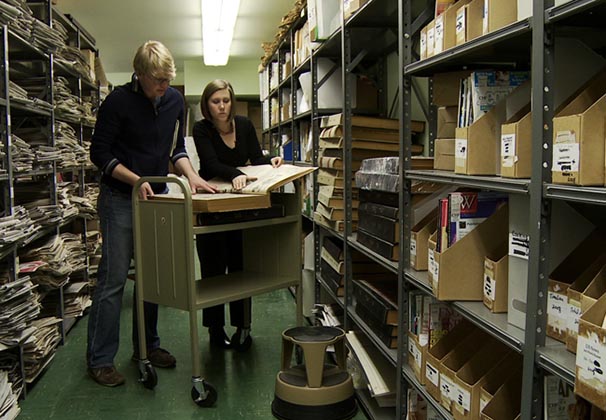
The saga of Bill Watterson’s “Calvin and Hobbes” came to an end with the phrase, “Let’s go exploring.” Its protagonists were left venturing into the snowy abyss of winter, with a limitless number of adventures awaiting them. The tone was bittersweet — readers were forced to experience the pain of losing dear friends. But the definitive closure affirmed that the strip was the work of an author’s vision, not commerce, guaranteeing a legacy of admiration.
This understanding of “Calvin and Hobbes” is the essence of Joel Allen Schroeder’s documentary, “Dear Mr. Watterson.” The film serves as both a history lesson and piece of commentary, chronicling the development of the strip while making a case for its impact on various generations who have grown up with Calvin and Hobbes since the comic’s debut in 1985.
Although Bill Watterson did not participate in the film — he is generally averse to interviews, preferring to maintain his privacy — his presence is felt throughout. Some of the interviews in “Watterson” include his contemporaries in the comic industry, like Bill Amend (“Foxtrot”) and Berkeley Breathed (“Bloom County”), current members of the entertainment industry, like Seth Green (“Robot Chic-ken”) and a wide array of readers who grew up with the strip.
This is where the film’s strength lies. The audience gets an insight into what made Watterson’s style unique and its ensuing mass appeal. When asked of the strips’ specialties, many cite the illustrations, noting how their landscapes were lush and perfect encapsulations of childhood’s wild imagination. Others note the themes of friendship and isolation, recalling how much they identified with Calvin and his need for a companion to understand his off-kilter humor.
One artist notes the savvy nature of its development, stating it was one of the few strips to understand its character dynamics and storytelling scope from the outset, while others would need years to find their voices. It’s not hard to see why these artists were so moved by Watterson’s comics. Watching “Watterson” will make viewers want to break out their old comic books the second they leave the theater.
“Dear Mr. Watterson” is an intriguing experiment and a useful film for anyone willing to invest themselves in the “Calvin and Hobbes” story. It is an admirable introduction for newcomers and an emotional trip down memory lane for longtime fans. As artists recall the epic adventures of Calvin’s Spaceman Spiff persona or the philosophical rides on his deadly toboggan sled, viewers will reminisce about their own childhood adventures with Calvin and Hobbes.
A version of this article appeared in the Wednesday, Nov. 13 print edition. Keith Allison is a staff writer. Email him at [email protected].






















































































































































